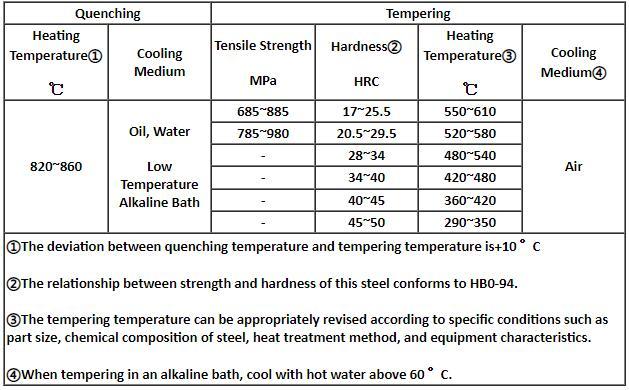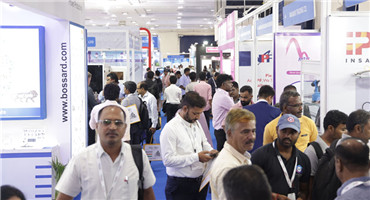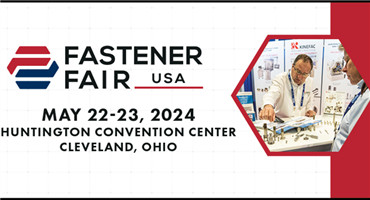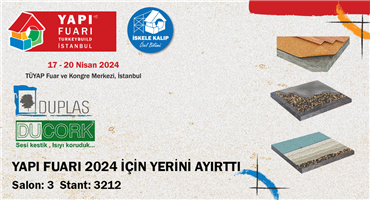Quenching And Tempering is a common heat treatment process for steel, usually used to improve the properties of steel. The main purpose of Quenching And Tempering is to achieve a balanced organizational structure of steel through appropriate heating and cooling processes, thereby improving its strength, hardness and toughness. This process usually includes the following steps:
Austenitizing: Steel is first heated above its critical temperature (i.e., austenitizing temperature), causing it to completely transform into austenite, which is a high-temperature steel structure.
Soaking: Steel is kept at high temperature for a period of time to ensure homogenization of the structure. This step helps improve the hardenability of the material.
Quenching: The steel is cooled rapidly, causing austenite to quickly transform into martensite, thereby increasing the hardness. The selection of cooling medium and the control of cooling rate are very critical to the success of the Quenching And Tempering process.
Tempering: Quenched and tempered steel is usually too brittle and hard, so it needs to be tempered to reduce the hardness and improve the toughness. This step involves reheating the steel to a lower temperature, holding it warm for a certain period of time, and then cooling it.
The steel after Quenching And Tempering has higher strength and hardness while maintaining a certain degree of toughness, which makes it suitable for many engineering applications, especially when it requires a balance of strength and toughness. It should be noted that different types of steel and different Quenching And Tempering parameters (temperature, time, cooling rate, etc.) will result in different properties. Therefore, when performing Quenching And Tempering, an appropriate process plan must be developed based on the specific alloy composition and application requirements. Carbon steel is often used without final heat treatment, it can be annealed, normalized, case hardened or tempered to enhance its manufacturing and mechanical properties.
Q235
Q235 is an ordinary low-carbon structural steel with a carbon content between 0.12% and 0.2%, which is equivalent to 10# and 20# steel. In theory, it can be quenched to obtain martensite. Due to the low carbon supersaturation of martensite, the hardness after quenching is quite low, around 170HBS. In its supplied state, this type of steel typically has a hardness of approximately 144HBS (having undergone a normalizing process at the factory). From this, it can be observed that quenching Q235 steel doesn't significantly increase its strength and hardness. Moreover, it presents drawbacks such as deformation, cracking, oxidation, decarburization during heat treatment, along with the additional expense costs. Therefore, it's not particularly cost-effective. Q235 is typically used without undergoing heat treatment upon purchase, generally, it is used in engineering projects where a large amount of steel is needed. It's commonly utilized right after hot rolling, which itself includes the process of normalizing. There are several reasons for avoiding heat treatment:
- The mechanical requirements in these scenarios aren't too demanding.
- The size of the steel components is too large, making heat treatment impractical.
- The material is inexpensive, with relatively low quality requirements, and being low-carbon steel, the effectiveness of heat treatment is also limited.
- If attempting to achieve hardness through quenching Q235, it would require carburization, which is highly inefficient.
45# steel
45# steel is a commonly used medium-carbon quenched and tempered structural steel. This steel exhibits moderate cold plasticity and slightly better annealing and normalizing characteristics compared to the tempering process. It possesses higher strength and good machinability, with appropriate heat treatment, it can achieve a certain level of toughness, ductility, and wear resistance, also, it's easily accessible. It is suitable for hydrogen welding and argon arc welding but less suitable for gas welding. Preheating is necessary before welding, and post-weld stress relief annealing is recommended. Normalizing can improve the cutting performance of blanks with hardness less than 160HBS. After Quenching And Tempering, this steel exhibits superior comprehensive mechanical properties compared to other medium-carbon structural steels. However, with low hardenability, the critical quenching diameter in water ranging between 12 to 17mm, showing a tendency to crack during water quenching. When the diameter exceeds 80mm, similar mechanical properties are observed after Quenching And Tempering or normalizing. For medium to small-sized mold components, Quenching And Tempering treatment can yield higher strength and toughness.
Quenching And Tempering Steel Data Sheet

Applications of #45 steel:
— It can be used as one of the materials for manufacturing DIN 6883 - 1956 tapered keys. It's suitable for producing bolts of grades 8.8, 9.8 with specifications up to M16, as well as bolts of grade 10.9 with specifications up to M22. Additionally, it's applicable for nuts of grades 8, 9, 10, washers of grade 300HV, as referenced in JC/T 5057.40-1995.
— It can be used for manufacturing high-strength large hexagon bolts for steel structures up to grade 8.8S with specifications of M20 and below, 10H or 8H grade large hexagon nuts, and high-strength washers with performance grades ranging from 35 to 45HRC, as specified in GB/T 1231-2006.
25CrMo
25CrMo is a low-carbon alloy steel containing elements like chromium and molybdenum. It boasts high hardenability and is free from temper brittleness. Below 500℃, it maintains sufficient high-temperature strength, exhibits good weldability, minimal tendencies for cold cracking, and demonstrates excellent machinability and cold strain plasticity. Typically, 25CrMo is used in a quenched and tempered or carburized quenching state. The heat treatment specifications for this steel are quenching at 880℃ in water or oil, followed by tempering at 500℃ with water or oil quenching.
25CrMo alloy steel is employed in manufacturing high-pressure pipes and various fasteners intended for non-corrosive mediums operating at temperatures below 250℃, including environments with nitrogen-hydrogen mixtures. It's also utilized in higher-grade carburized parts like gears, shafts, among others.



